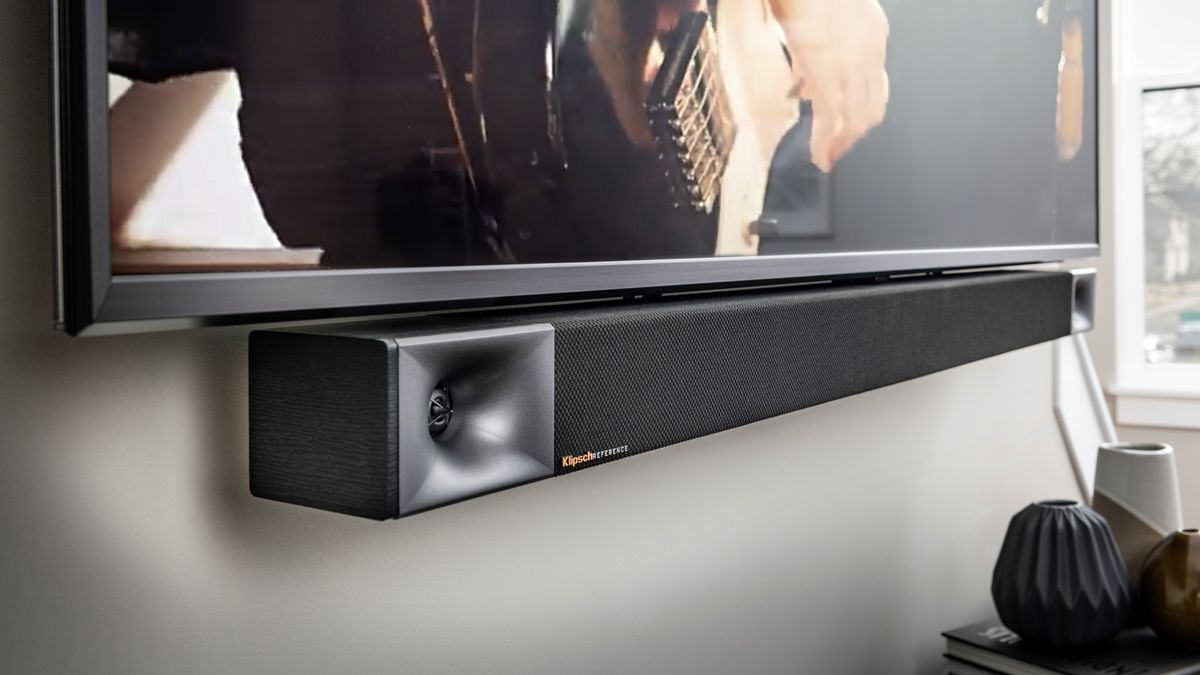TechRadar Verdict
The Klipsch BAR 48 delivers an impressive audio performance thanks to the company’s legendary speaker know-how and horn-loaded tweeters. However a limited set of features and lack of any HDMI inputs make this 3.1-channel soundbar hard to recommend at this price.
Pros
- +
Excellent 3.1-channel performance
- +
Well integrated subwoofer
- +
Easy to set-up and use
- +
Optional surrounds
Cons
- -
Design is an acquired taste
- -
No immersive audio
- -
No HDMI inputs
Why you can trust TechRadar
Legendary speaker manufacturer Klipsch has recently expanded its soundbar line-up with two new models - the 2.1-channel BAR 40 and the 3.1-channel BAR 48 (reviewed here). Both include a wireless subwoofer, but the BAR 48 is larger and packs a bigger punch.
The headline feature is the use of horn-loaded tweeters – something of a Klipsch speciality. These allow for greater sensitivity and should result in a superior audio performance, especially when combined with plenty of power and a separate sub.
Thankfully, it absolutely performs in the audio department. That's a good thing because, aside from its horn-loaded tweeters, this soundbar is light on features: There’s a backlit remote, but only a single HDMI-ARC connection, and no support for object-based or even lossless audio.
It isn’t cheap either, and will currently set you back $499/£565 (around AU$740). At that price the BAR 48 will find itself up against plenty of better-specified competition, some of which offer a better price-to-performance ratio.
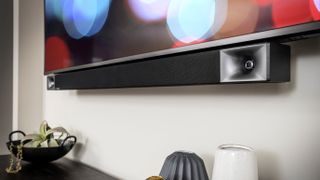
Design
The Klipsch BAR 48 uses the company’s famous horn-loaded tweeters, with a pair adorning the front of this soundbar. That does make the BAR 48 something of an acquired taste, with fans of horn tweeters loving it and those that are less enamoured finding it decidedly ugly. If you fall into the latter category that’s unfortunate, because you can’t even cover the tweeters with a grille.
That said, however, its wooden construction is unusual, offering an advantage over the more plastic soundbars at this price point. Its width will suit larger TVs with screen sizes over 55-inches, and it has a low profile at 73mm.
The horn-loaded tweeters at either end are finished in dark silver, which adds a touch of elegance to what is otherwise a black rectangular box. In a nice touch, Klipsch offer interchangeable end caps to better match your decor. There’s no real display (aside from LED indicator lights), and at the top, on the far right, are some basic controls for power, volume, and input.
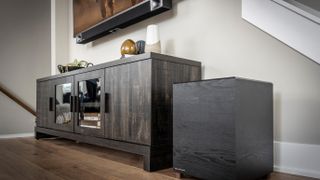
The BAR 48 includes a wireless subwoofer that's also made of wood and has a build quality that generally matches the main unit, combined with a simple black finish. It uses a large 8-inch downward-firing driver with a bass port, and measures 302 x 410 x 410mm (WxHxD). The sub should pair automatically with the soundbar when you first turn it on.
The full-size remote is backlit and offers all the buttons you’ll need to effectively control the BAR 48. There are keys for power, volume, and the various inputs, along with mute and a button for turning off the LED indicator lights. You can also adjust the subwoofer level, and select the Dialogue, Surround, and Night modes.
The connections are located in a recessed area at the rear of the soundbar, and are composed of a single HDMI-ARC port, an optical digital audio input, and a 3.5mm analogue input. There’s also a USB port for firmware updates, a connector for an IR extender, Bluetooth, and a subwoofer output allowing you to upgrade the wireless sub with a wired one, or even run dual subs.
Design TL;DR: The wooden construction, large 8-inch subwoofer, and backlit remote are all positives; but the horn-loaded tweeters are an acquired taste, and the connections are limited.
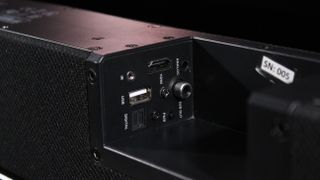
Features
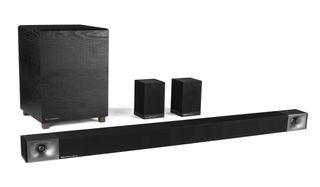
Dimensions: 1211(w) x 73(h) x 86(d)mm | Speaker configuration: 3.1 | Claimed audio power: 440W | Connections: HDMI-ARC; optical digital input; 3.5mm analogue input; subwoofer output; Bluetooth
The Klipsch BAR 48 is designed as a ‘plug and play’ solution that quickly and effectively upgrades the built-in audio of your TV. For that reason the company has deliberately kept things simple, with a 3.1-channel speaker configuration.
The three front channels are each composed of a 1-inch soft dome tweeter mated to a Tractrix horn, and two 3-inch oval fibre composite cone woofers. The use of a dedicated centre speaker should ensure dialogue remains clear and focused on the screen.
The separate wireless subwoofer handles the lower frequencies thanks to an 8-inch downward-firing driver and a bass port. All these drivers are separately amplified to deliver a detailed and dynamic performance, and the system as a whole has 440W of power.
Klipsch has included three sound modes: Dialogue for increased vocal clarity; Night for reduced dynamic range when you need to keep things quiet; and Surround to virtually create the effect of rear speakers. The company also plans to add DTS Virtual:X via a USB firmware update, but for now there's no immersive audio.
What the BAR 48 can decode, however, is lossy Dolby Digital and DTS formats up to 5.1 channels. However if you want to create a genuine 5.1-channel system, you need to buy the optional SURROUND 3 rear speakers for $249/£265 (these connect using a dedicated USB wireless transmitter).
That’s it as far as the features are concerned, and perhaps the biggest surprise is the lack of lossless Dolby TrueHD or DTS-HD MA decoding, as well as the lack of immersive audio support. You’d expect both at this price, not to mention Wi-Fi, smart features, and multi-room functionality.
Features TL;DR: The 3.1-channel design benefits from a dedicated centre speaker and powerful subwoofer, but the feature-set is limited with no lossless or object-based audio support.
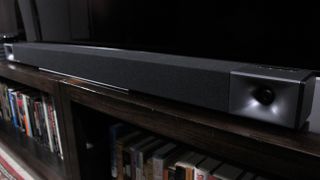
Performance
The Klipsch BAR 48 is focused on delivering the best possible 3.1-channel performance from a mid-range soundbar, and in that sense it succeeds admirably. The company knows how to build a speaker, and has applied that knowledge to create a soundbar that takes full advantage of its proprietary horn-loaded tweeters.
The result is a wide and expansive front soundstage that combines exceptional detail, thanks to the greater sensitivity of the horn tweeters, with a powerful delivery that produces plenty of dynamic range. The higher frequencies are nicely defined, while the mid-range has depth and clarity. The powerful subwoofer adds a solid foundation of bass that reinforces the whole system.
What this all means is that when it comes to music, the BAR 48 is very impressive: Listening to Nick Cave’s deep gravely delivery on O, Children is a joy thanks to the effective woofers, while the tweeters help pick out the rising chorus behind him with precision. A more poppy confection like Lizzy’s infectious Sleepwalking benefits from this energetic bar’s ability to create a sense of fun. Thankfully these strengths also apply to TV shows, allowing you to enjoy all your favourite programming with a level of sound quality that eclipses the built-in speakers on any modern TV.
The BAR 48’s biggest asset is its dedicated centre speaker, which ensures that dialogue remains clear and focused on the screen. Whether it’s the news, a sports broadcast, or your favourite game show, this soundbar will deliver the vocals with a pleasing accuracy that guarantees you won’t miss a single word.
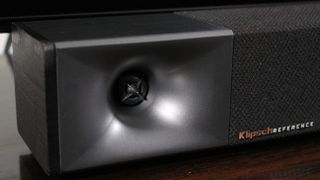
The width of the soundbar itself not only spreads the sound either side of the screen, but also generates excellent stereo separation. This not only means that music is reproduced with excellent stereo imaging, but also allows the BAR 48 to render effects with remarkable precision, placing them across the front of the room.
When it comes to TV dramas and movies, all these factors combine to create an engaging soundscape at the front of the room. A good soundtrack like Dunkirk is delivered with a dynamic and visceral quality that creates an emotional response. Gunshots ricochet in front of you, the high-pitched wail of a Stuka dive-bomber terrifies, and explosions hit with a seismic kick.
However the music remains perfectly balanced either side of the screen, and dialogue retains clarity and focus. The system also has plenty of headroom, and the sub mines the sonic depths. The one downside is a lack of surround presence, even with the Surround mode engaged. If you want to fully reproduce a 5.1 mix, you’ll need to invest in Klipsch’s wireless surround speakers.
Performance TL;DR: This well-designed soundbar is easy to set-up and use, delivering an impressive 3.1-channel performance that’s a significant upgrade to the sound in your TV.
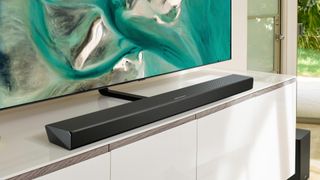
Value
In terms of absolute performance, the Klipsch BAR 48 is a fantastically simple ‘plug and play' 3.1-channel soundbar solution. The superior woofer and tweeter design, coupled with plenty of power and a large 8-inch subwoofer delivers an impressive front soundstage.
However, the features are somewhat lacking: There’s no display, no HDMI inputs, and it can’t decode lossless audio let alone object-based audio formats like Dolby Atmos and DTS:X. There’s also no Wi-Fi, smart features, or multi-room functionality, making it hard to justify the price tag.
So what can you buy instead? Well, the Sony HT-ZF9 is a good alternative. It also uses a 3.1-channel layout, but uses psychoacoustic processing to support Dolby Atmos and DTS:X. Once you add two HDMI inputs, Wi-Fi, Chromecast and the ability to work with smart assistants, you realise what else you can get for the money.
If your budget can stretch a little further, the Samsung HW-Q70R is another great alternative. This 3.1.2-channel soundbar supports Dolby Atmos and DTS:X, thanks to upward-firing drivers. It only has one HDMI input, but passes HDR10+, has Wi-Fi, works with Amazon Alexa, and supports multi-room functionality.
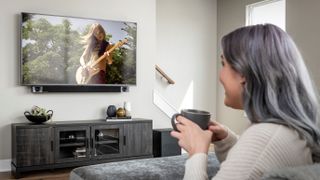
Verdict
The Klipsch BAR 48 is a well-made and impressive sounding offering from the speaker manufacturer, making effective use of its iconic horn-loaded tweeters. The three front channels and beefy 8-inch subwoofer ensure a detailed front soundstage with clear dialogue and deep bass. Whether you’re listening to music, watching your favourite TV show, or catching the latest blockbuster, the BAR 48 delivers an assured performance that’s sure to please.
It’s just as well the BAR 48 is all about sound quality and simplicity, because it’s seriously lacking on the features front. There’s no HDMI inputs, no Wi-Fi, and no smart features; but most surprisingly for a soundbar at this price point the decoding is limited to lossy formats. Klipsch plans to add DTS Virtual:X but with competing soundbars supporting Dolby Atmos and DTS :X immersive audio, the BAR 48 will struggle.
- Here's our list of the best soundbars in 2019
Stephen is a freelance reviewer with over ten years experience writing for all the major tech publications. As a lifelong film fan he’s embraced the evolution of home entertainment over the decades, and as a professional audio and video calibrator he’s able to keep abreast of the latest developments and innovations. When not reviewing the latest products, Stephen can be found obsessing over how to cram a bigger screen and more speakers into his own home cinema.
